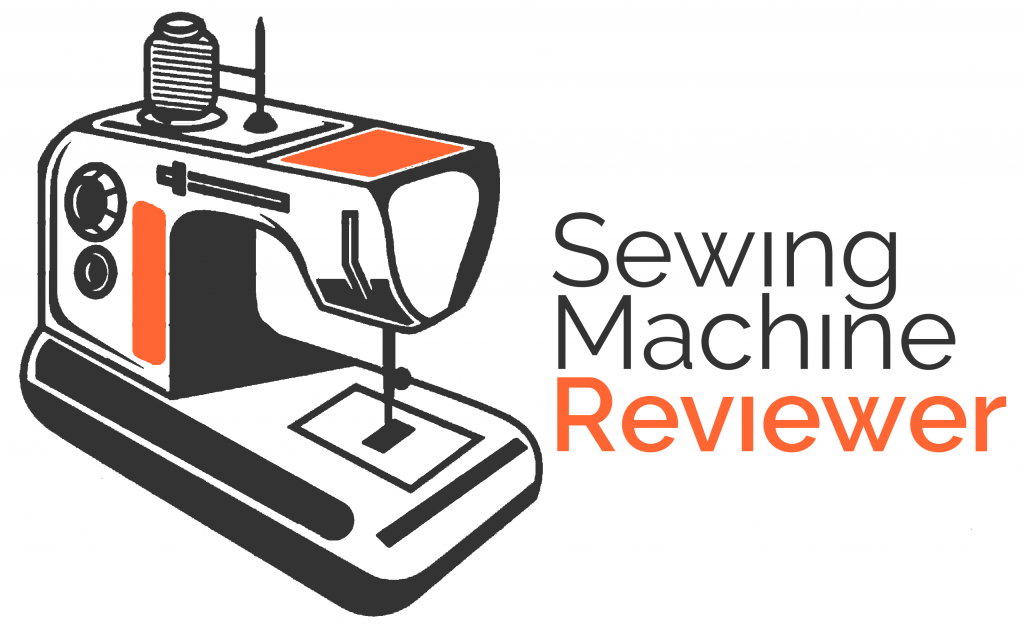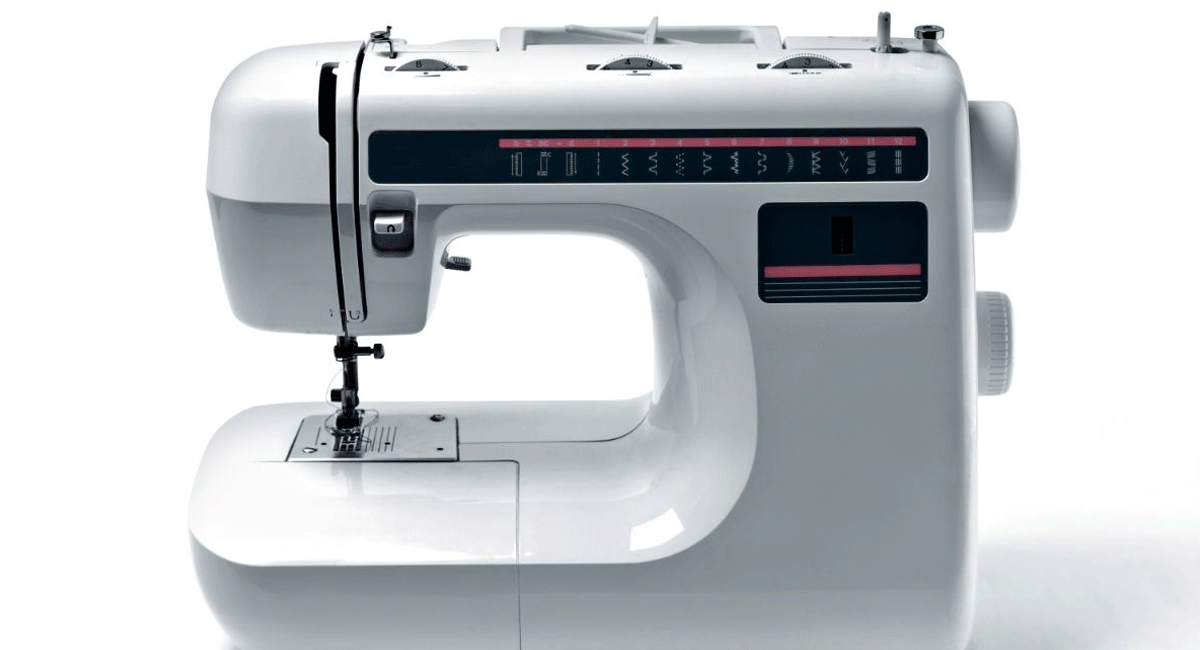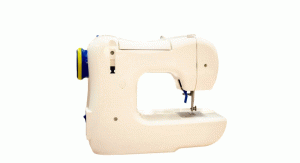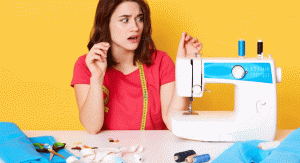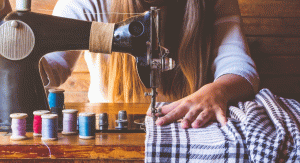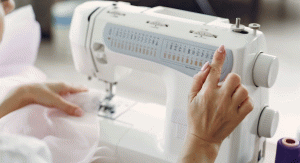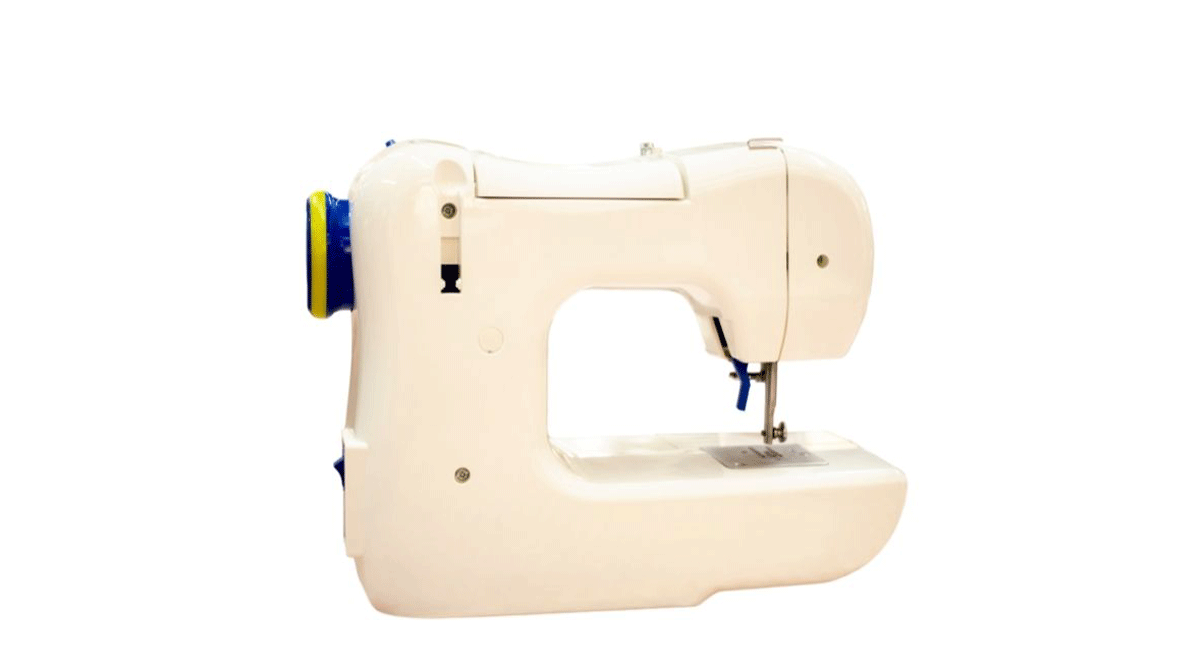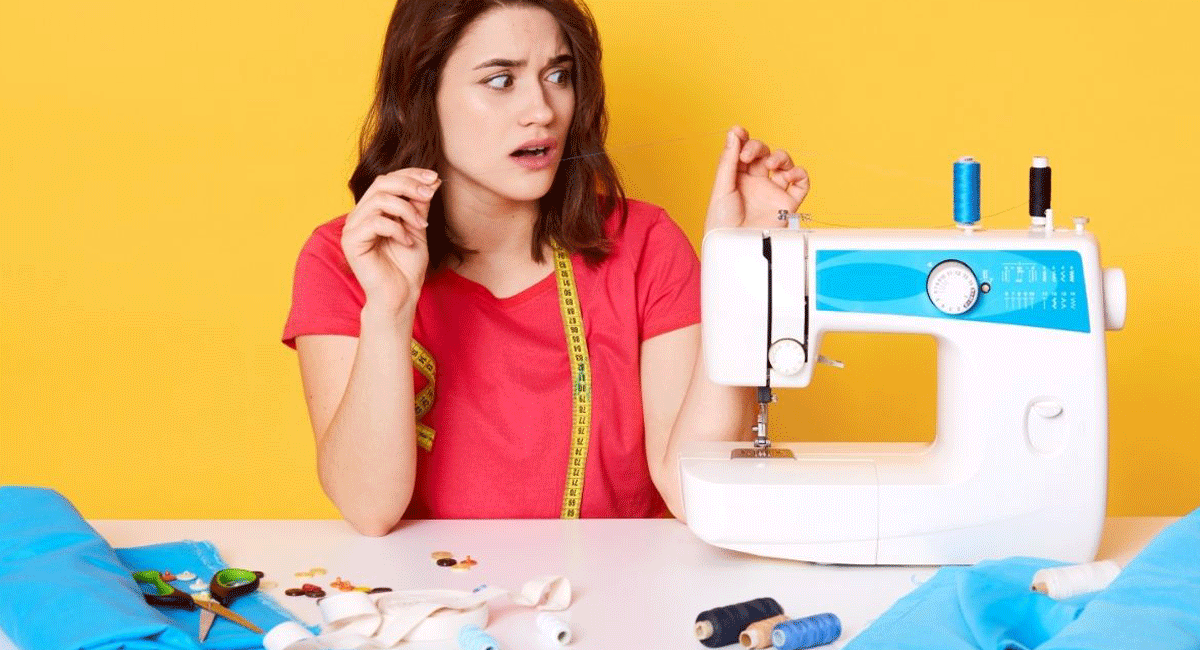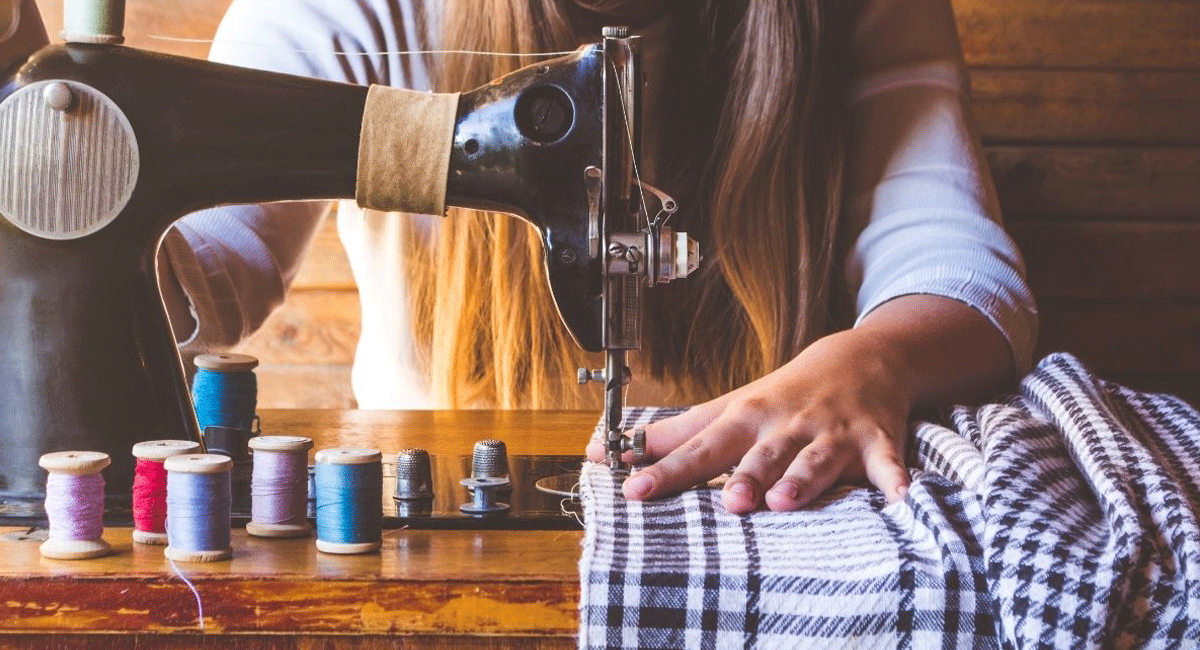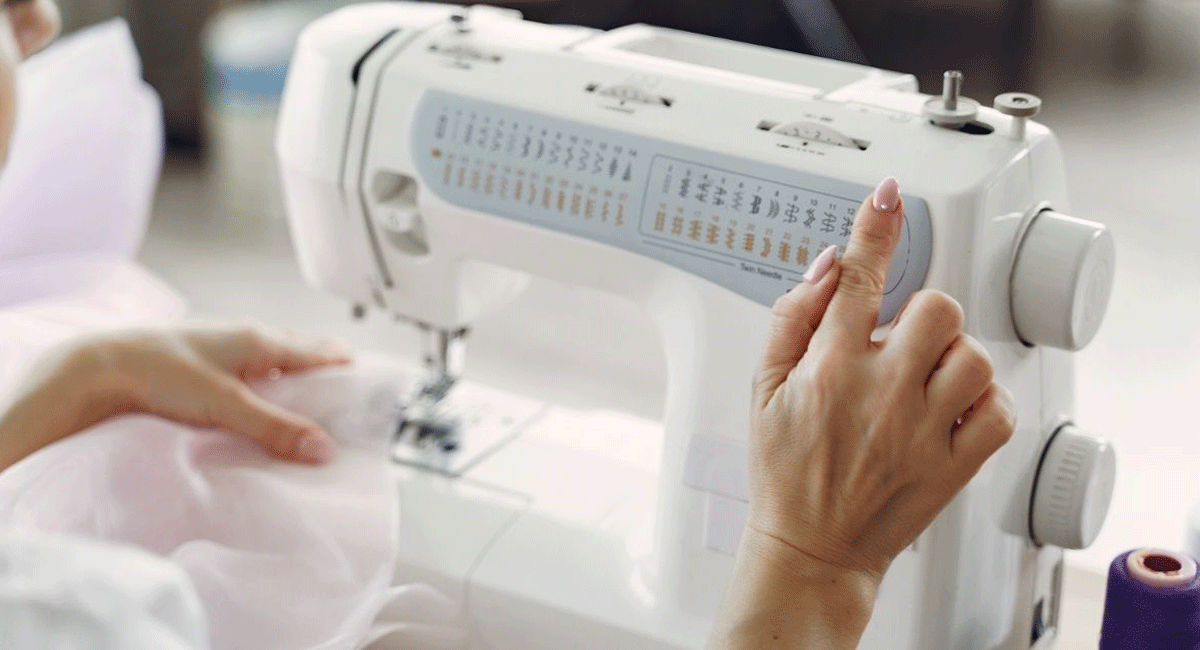It doesn’t matter how old you are, how experienced you are with sewing, or how many machines you already own. If there’s a chance you might want to do some sewing on the go, it’s worth picking up a handheld mini sewing machine.
They’re lightweight and easy to carry around in your bag, so they can come with you wherever your adventures take you. But before we look into all the reasons these tiny machines will make your life easier, let’s first take a look at how to use a mini sewing machine, step-by-step!
What You Will Need
To thread a handheld mini sewing machine, you will need the following items:
- The machine itself
- A power supply (either batteries or an AC adapter)
- Some thread
- Scissors
- A seam ripper (optional but recommended)
If your machine has a foot pedal, make sure it is connected to the power supply before you begin. If not, simply press down on the pedal with your foot to get started. Wind about 12 inches of thread onto the bobbin and clip off any excess.
How to Use Mini Sewing Machine: Step-By-Step
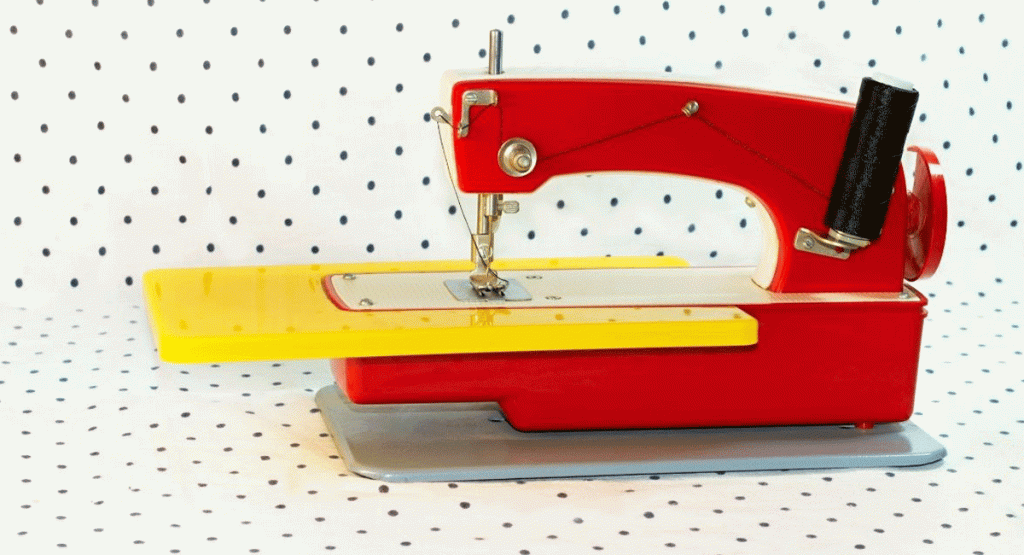
1. Connect the Power Supply
The first thing you’ll need to do is connect the power supply. Most machines have a small adapter that plugs into the wall, and then the machine itself has a plug that goes into the adapter. Once everything is plugged in, turn on the machine by hitting the switch at the back (or sometimes on top).
If it’s your first time using the machine, be sure to read through all of the instructions that came with it before starting. Different machines may have different features or settings, so it’s essential to know how to use them all correctly!
2. Wind Thread onto the Bobbin
Now you’ll need to wind some thread onto your bobbin. The mini sewing machine should come with a small spool of black thread, but if you haven’t purchased any yet, feel free to use regular-size threads and bobbins instead. You should see a little knob right above the needle used to wind thread onto your bobbin.
3. Thread the Top Part of the Machine
Now let’s move on to how you’ll be using your new machine, including putting it together so it can sew for you. Your handheld piecing machine or cross-stitch embroidery kit will have two hoops sitting next to each other (the top one being slightly smaller than the bottom).
Each hoop has four holes in them, and these are where you’re going to place your pins. There are also tiny metal pieces on the side of each hoop that should be placed on top of one another.
4. Thread the Needle
This step is how you get your needle threaded and ready to go. First, make sure your machine has a button (usually in the front or below all the hoops) for raising and lowering the presser foot. This will hold up any fabric, so you can easily feed it through later.
Next, find a tiny hole at the back end of what looks like an arm sticking out from under your top hoop: push down on this piece until you feel something click into place underneath. Now grab both ends of the thread (there should be two pieces coming out from under the bottom part), twist them around each other once or twice, and pull until the thread is tight. You’ve now successfully threaded your needle!
5. Load the Bobbin into the Mini Sewing Machine
Now that your machine is set up and ready to go, you need to load your bobbin with some thread. You might have to try several times before you get the hang of it. First, find the little door on the side of your mini sewing machine, and then place your bobbin inside so that the thread is coming out from the top.
Close the door and make sure it’s locked into place by pressing down on it until you hear another clicking noise. Now grab hold of both ends of the thread coming out from under the bobbin, and give them a good tug until they’re tight.
6. Bring Up the Bobbin Thread
Now you’re finally ready to start sewing! You need to make sure your bobbin thread is up and ready to go. To do this, find the little lever on the front of your machine (it should be right below where you load in your bobbin) and move it towards you until you feel some resistance.
Hold down on the foot pedal and watch as both threads start moving around each other underneath the fabric. If everything looks good, release your foot from the pedal and slowly raise the presser foot.
Begin sewing! To make use of your new handheld piecing machine or cross-stitch embroidery kit, you’ll want to place a piece of fabric underneath the top hoop. You can then insert whatever decorative features you’d like (such as pins) and slowly lower down the presser foot onto everything so that they’re securely in place.
Finally, you need to turn on your mini sewing machine and start using it as you usually would. Be sure not to sew too fast at first, especially if this is your first time using one of these machines. If your machine is having trouble moving across the fabric (as most mini sewing machines do), try adjusting the presser foot height using the lever mentioned earlier.
When done with stitching, push down on the stop button, raise the needle, and pull out the feed dog cord. Then, turn off the power switch at the back of the machine after stopping the needles from spinning! Small parts can cause injury, so use great caution when removing small pins in the finger-tip range.
How to Sew a Straight Line
The best thing about handheld sewing machines is that they’re small, lightweight, and easy to move around. This means they can be taken just about anywhere with you! But if you’re looking to do some serious sewing (like hemming a skirt or fixing a tear in your shirt), you’ll probably want to use a table instead of trying to balance everything on your lap.
When it comes time for you to start stitching your fabric together, you’ll need to make sure the needle is lined up in the middle of where you want it to go.
You can do this by eye at first, but eventually, you might want to invest in a seam guide (which helps ensure accuracy). Slowly lower down the presser foot once the needle is in position and start sewing!
As you sew, be sure to keep an eye on how your fabric is moving. Stop what you’re doing and re-adjust if it starts bunching up or looking weird. You may need to be patient before you get the hang of how to sew a straight line with your handheld machine, but eventually, you’ll be able to do it like a pro.
How to Sew a Zigzag Pattern
First, find the lever on your mini sewing machine that allows you to change how wide your stitches are (again, it should be underneath where you load in your bobbin). This will come in handy for things like applique work or adding decorative edges to your fabric. You’ll need to adjust how your machine is set up to do this.
Set it so that it’s somewhere between a quarter and half of an inch. Then, grab hold of both ends of the thread, give them another good tug until they’re tight, and move on to bring up the bobbin once more.
How to Sew Cuts and Curves
One of the biggest benefits of handheld sewing machines is making cutwork or curved-edged sewing easier. All you need to do is make sure your fabric is positioned how you’d like it, lower down the presser foot, and start sewing! The best part about using a handheld machine is the ability to achieve precision with how much or little fabric you want to use.
Accessories and Other Extras
Some of the most popular accessories include:
- Extra bobbins (so that you don’t have to keep rewinding them)
- A small foot pedal for easier control over how fast or slow the machine goes (which is excellent for beginners)
- An extension table so that you can use more than just free-motion techniques with your handheld sewing machine (this will help if you plan on doing any quilting)
- Ruler guides that allow even greater accuracy
Conclusion
Handheld sewing machines are a great device for novice and expert seamstresses alike. If you’re wondering how to use a mini sewing machine, step-by-step, this guide will hopefully provide you with a great learning foundation.
Not only are handheld sewing machines portable and lightweight, but they’re also straightforward to use! With just a bit of practice, you’ll be able to sew straight lines, zigzag patterns, and all sorts of other cool designs in no time.
